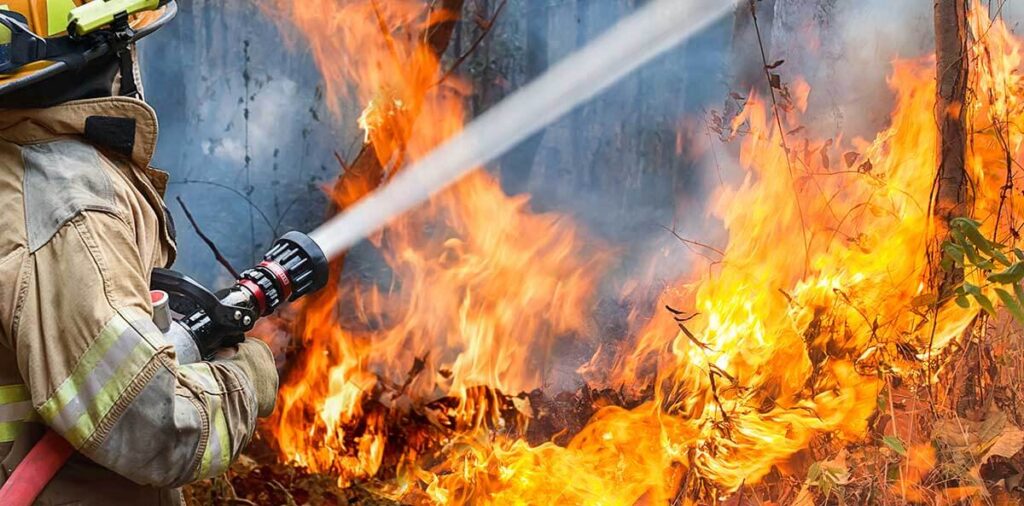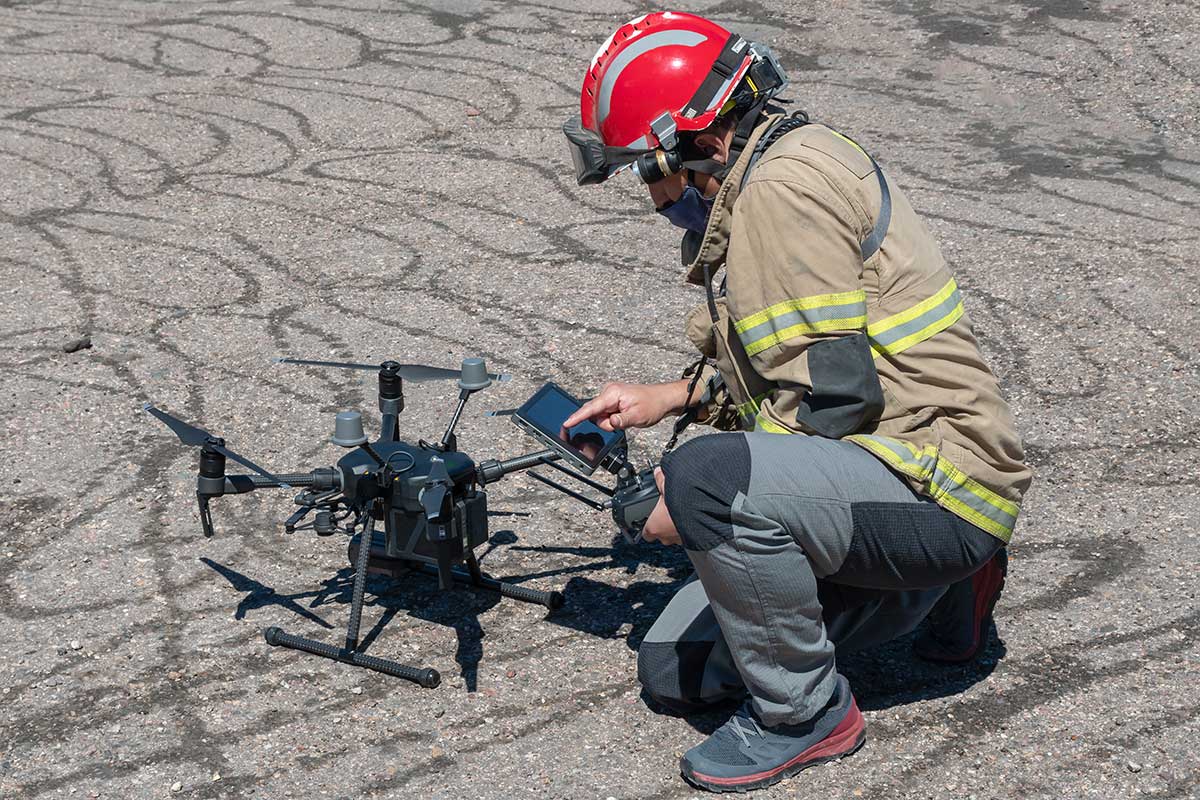First responders must make rapid fire choices, sometimes in split seconds, that hold the key to saving lives. In this high pressure environment, where time is of the essence, urgency remains paramount and lives are at risk, drones have become critical assets. In these emergency situations, drones now provide real time updates from the field and bolster overall situational awareness, while simultaneously minimizing risks to human life.
As important as deploying a drone during a crisis has become, what happens before that deployment is perhaps even more important… and yet sometimes overlooked.
As they say, “Practice makes perfect.” Nothing can be more true when the stakes are high, adrenaline is pumping and professionals have to fall back on muscle memory. Operator training holds the keys to safely, successfully and repeatedly leverage the great potential of drone technology in emergency response.
Drones Have Changed the Game
Imagine receiving a 911 call. The report: a suspect is actively fleeing the scene of a robbery. This situation carries a sense of great urgency. In the past, responding officers would have had to act with incomplete information and face potential danger. Today, in places such as Chula Vista, California, an operations center immediately launches a drone to get eyes on the situation. This concept, Drone as First Responder (DFR), has truly changed the game for police response.
Based on information from the Chula Vista Police Department (CVPD), drones typically reach target locations around 103 seconds earlier than officers on foot. This effectively reduces the response time by half. In 30 percent of incidents analyzed in CVPD’s data, drones offered information that contributed to more informed and better response engagements, without risking the lives of law enforcement or citizens.
Reports from agencies in Florida and Texas further reveal that drones have improved response times by 20 to 30 percent. This allows officers to make decisions before even reaching the scene. The data proves that DFR helps conserve resources and averts unnecessary conflicts.
Drones not only support law enforcement in 911 response. Units effectively utilize them to assist in crowd control, analyze crime scenes and provide situational awareness over a wider geography. Increasingly, drones have become the go-to technology for responders.

The High Stakes of Drones in Emergencies
A number of real-world success stories further validate the benefits of drone use in emergency situations. During the recent Palisades Fires in California, firefighters deployed drones to help measure the damage, find hot spots and lead them to areas most in need of assistance. Drones, equipped with thermal imaging, helped firefighters to locate survivors through the thick smoke and guided crews through the flames.
Drones also proved to be invaluable in search and rescue operations in the aftermath of the Champlain Towers South collapse in Surfside, Florida. Overhead views helped first responders to create a map of the debris field, pinpoint survivors and determine the risks of the structure.
These high-pressure situations cry out for drone use. Now imagine a drone pilot, in either one of these circumstances, who lacked training or experience to operate in these circumstances.
For example, during the devastating California wildfires, an operator without the right training could have overestimated or underestimated temperatures. This might have resulted in well intended but poor operational choices that cost precious time (of which there is none to spare).
In Florida, had someone improperly used a drone, this could have raised legal issues, privacy issues or simply rendered the deployment ineffective. In a worst case scenario, an operator who is not a trained professional with well-defined guidelines could inadvertently cause a mishap.
Fortunately, none of this happened. But it could.
Without guidance and preparation, even the most sophisticated drone technology could prove ineffective in real world scenarios. The true impact of drones can only be fully harnessed when first responders receive training to use them efficiently and safely.
Beyond Stick and Rudder
According to Chief Charles Werner (ret.), Director of DRONERESPONDERS, the world’s preeminent 501C3 non-profit organization serving first responders who employ drones while public safety drones enhance safety, improve operational effectiveness, provide real time situational awareness and serve as a huge de-escalator for law enforcement, major challenges lie ahead. He also noted, however, that “some of the major challenges ahead include, but are not limited to, establishing an aviation safety culture, standardized training curriculum and credentialing.”
For public safety agencies to effectively integrate drones into their emergency response operations, they must first prioritize structured training. The Federal Aviation Administration (FAA) requires that all drone operators pass a Part 107 certification that covers topics like airspace, weather and operational constraints.
Basic skills are not enough.
As DFR continues to grow, there is a need for specific training. Public safety drone operators need hands-on specific mission-oriented flight training relevant to their domain. Firefighters must learn thermal imaging and wildfire surveillance. Law enforcement teams need to be trained for night operations and real-time live streaming for tactical decision making. Operators must be versed in rapid deployment, intelligence gathering and the smooth integration with ground teams.
Even specialized flight and tactical skills are not enough.
Emergency responders also need to be trained in data analysis. Drones collect a large amount of visual and sensor data. If operators cannot analyze this information in real time, then its value is diminished.
Additionally, as drone traffic increases, including in disaster areas where helicopters, news drones, and unauthorized drones present safety hazards, airspace management and counter-UAS training will become increasingly even more critical.

Breaking Down Barriers to Drone Training
Despite the numerous benefits of specialized drone training for first responders, for a host of reasons, many agencies face challenges in making it a reality.
Funding remains the biggest issue. Many departments are simply unable to allocate resources towards the development of adequate training programs because of constrained budgets. Federal grants and private sector partnerships might help agencies that want to improve their drone operations. This area requires further collective solutions so innovative technologies can better aid in catastrophic response. (See Jason Day’s OpEd, “The Rise of Drones-As-A-Service Solutions for Public Safety.”)
Complex FAA regulations, which can be overwhelming for agencies new to drone operations, can also create a barrier to progress. Without professional guidance, departments may get stuck trying to understand legal requirements and compliance protocols for both training and operations. Ironically, training programs that address regulations can help clarify regulatory processes, ensure smooth integration and avoid costly errors.
Finally, some agencies hesitate to adopt drones at all – and the required training that should go along with such programs – due to concerns over public distrust. However, most early adopters have demonstrated that when trained properly, they contribute to better emergency response. This actually builds public confidence, especially when such agencies are transparent and involve the community in their programs.
Drones Are the Future of Public Safety
Drones are no longer an optional tool for use by emergency teams. They are now essential. They have proven their ability to save lives, improve the speed of operations and bolster safety. The trends seem to indicate that the application of drones in emergency response will rise by 15 percent every year.
Climate trends seem to indicate that wildfires, hurricanes, tornadoes, flooding and other disasters will likewise tick up.
All the while drone technology continues to evolve. The advent of artificial intelligence, progress in beyond visual line of sight (BVLOS) capabilities, drone swarms and future fully autonomous emergency response systems will only increase the role of drones in public safety.
For all of these reasons, the need for structured training for public safety is more important now than ever before. The continued successful employment of drones by public safety will come down to the skill and readiness of the people controlling them. And agencies with the benefit of trained drone teams will be at the forefront of protecting lives, infrastructure and communities.
Bronwyn Morgan is a FAA sUAS Part 107, FAA Drone Pro, FAA Safety Team Representative, and CEO of Airversity.
By: Bronwyn Morgan

